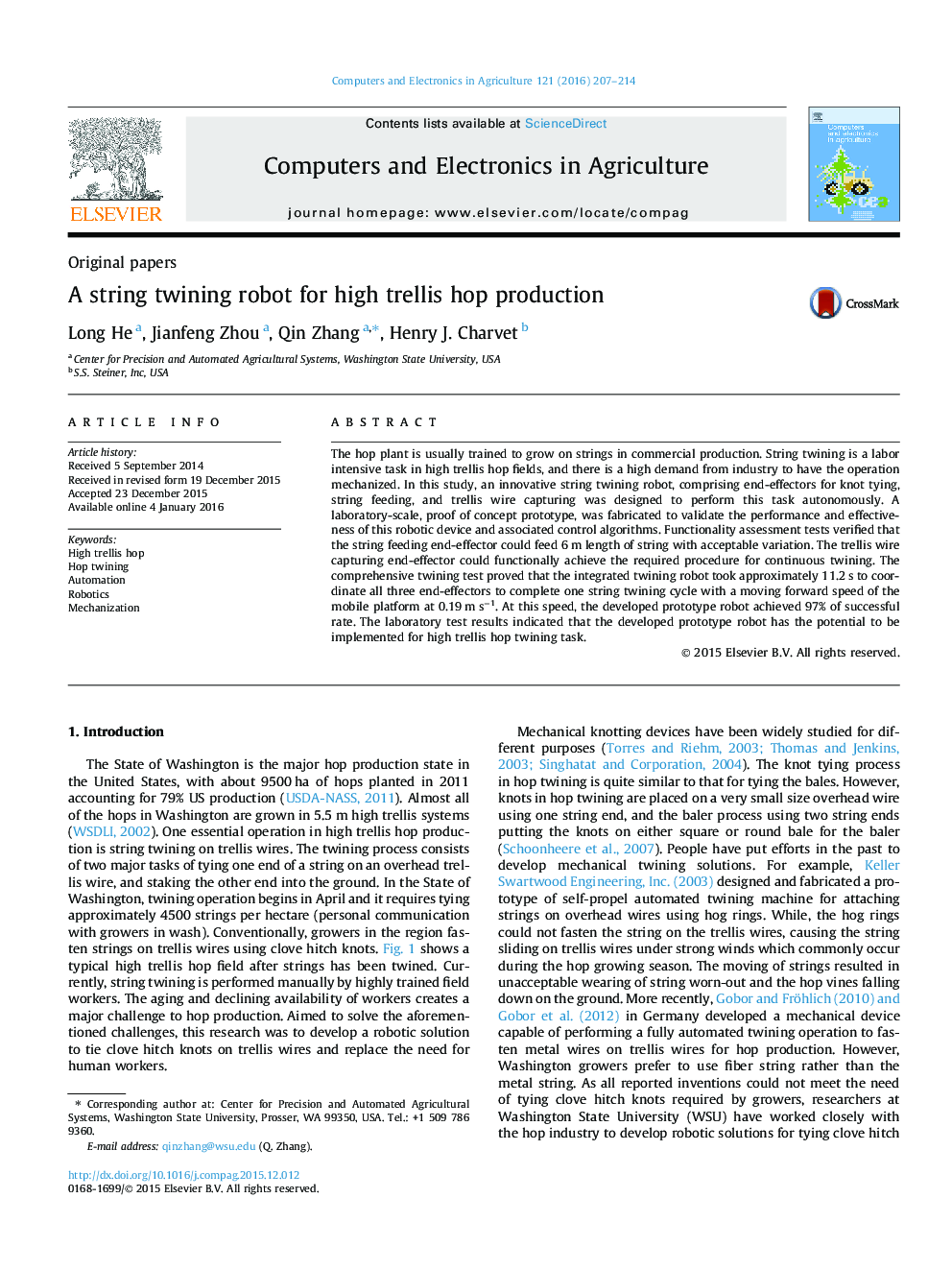| Article ID | Journal | Published Year | Pages | File Type |
|---|---|---|---|---|
| 84002 | Computers and Electronics in Agriculture | 2016 | 8 Pages |
•A full function multi-actuator prototype robot for high trellis hop twining was investigated.•The prototype integrated three end-effectors, each of whose performance was evaluated separately.•Function and reliability tests were conducted and their results reported.
The hop plant is usually trained to grow on strings in commercial production. String twining is a labor intensive task in high trellis hop fields, and there is a high demand from industry to have the operation mechanized. In this study, an innovative string twining robot, comprising end-effectors for knot tying, string feeding, and trellis wire capturing was designed to perform this task autonomously. A laboratory-scale, proof of concept prototype, was fabricated to validate the performance and effectiveness of this robotic device and associated control algorithms. Functionality assessment tests verified that the string feeding end-effector could feed 6 m length of string with acceptable variation. The trellis wire capturing end-effector could functionally achieve the required procedure for continuous twining. The comprehensive twining test proved that the integrated twining robot took approximately 11.2 s to coordinate all three end-effectors to complete one string twining cycle with a moving forward speed of the mobile platform at 0.19 m s−1. At this speed, the developed prototype robot achieved 97% of successful rate. The laboratory test results indicated that the developed prototype robot has the potential to be implemented for high trellis hop twining task.
